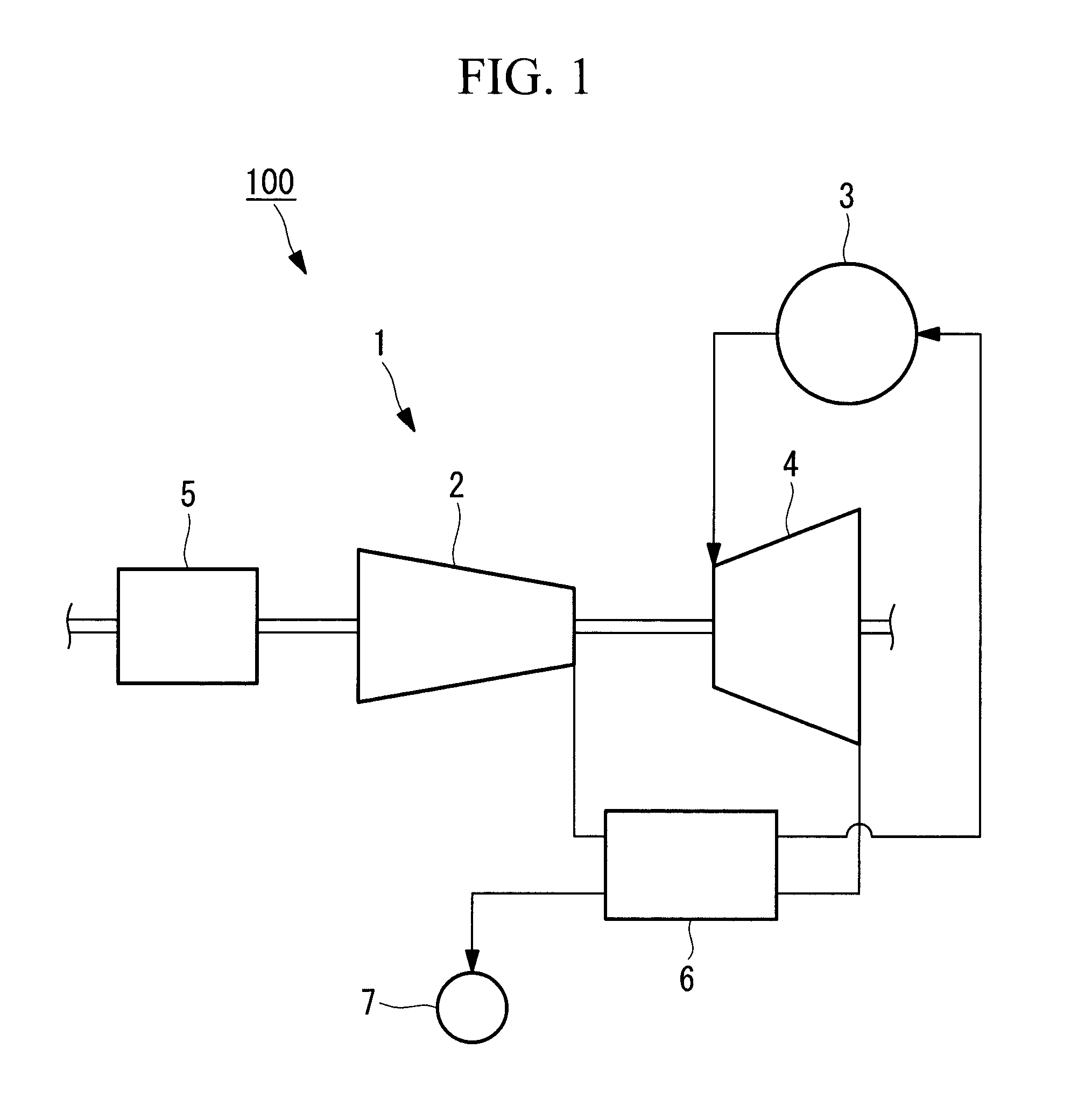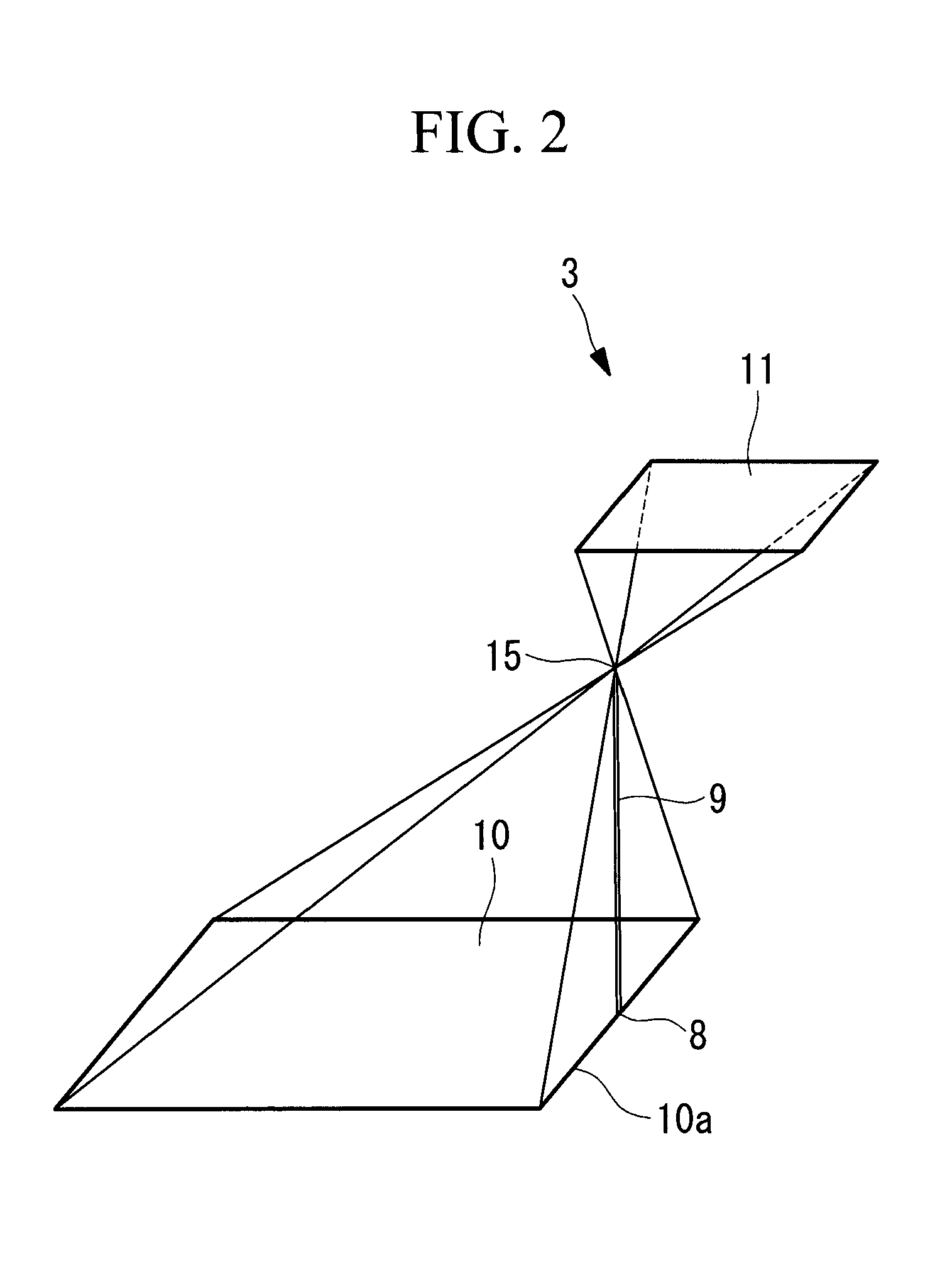Solar central receiver
- Summary
- Abstract
- Description
- Claims
- Application Information
AI Technical Summary
Benefits of technology
Problems solved by technology
Method used
Image
Examples
first embodiment
[0065]Referring to FIGS. 1 to 4, a solar central receiver according to the present invention will be described below.
[0066]FIG. 1 is a schematic diagram of the configuration of a concentrated solar power gas turbine and a concentrated-solar-power-gas turbine power generation equipment having a solar central receiver according to this embodiment, FIG. 2 is a diagram for explaining the relationship between the solar central receiver according to this embodiment and a heliostat field on which heliostats for focusing sunlight onto this solar central receiver are disposed, FIG. 3 is a diagram for explaining the outline of the heliostats, and FIG. 4 is a schematic diagram of the configuration of the inside of the solar central receiver according to this embodiment.
[0067]As shown in FIG. 1, the concentrated solar power gas turbine 1 is an apparatus mainly composed of a compressor 2 that compresses a compressible working fluid (a working fluid such as air) to raise the pressure thereof, a s...
second embodiment
[0081]Referring to FIGS. 5 and 6, a solar central receiver according to the present invention will be described.
[0082]FIG. 5 is a diagram for explaining the relationship between a solar central receiver according to this embodiment and a heliostat field on which heliostats for focusing sunlight onto this solar central receiver are disposed, and FIG. 6 is a schematic diagram of the configuration of the inside of the solar central receiver according to this embodiment.
[0083]As shown in FIG. 5, instead of the solar radiation receiving surface 11, a solar radiation receiving surface 22 is defined inside the solar central receiver 21 according to this embodiment, and, as shown in FIG. 6, instead of the heat transfer pipes 16, heat transfer pipes 23 are provided in the solar central receiver 21 according to this embodiment, which are the difference to the above-described first embodiment. Because the other components are the same as those in the above-described first embodiment, the descr...
third embodiment
[0093]Referring to FIG. 7, a solar central receiver according to the present invention will be described.
[0094]FIG. 7 is a cross-sectional view showing the relevant part of the solar central receiver according to this embodiment.
[0095]As shown in FIG. 7 a solar central receiver 31 according to this embodiment is different from the above-described first embodiment in that heat transfer pipes 32 are provided, instead of the heat transfer pipes 16. Because the other components are the same as those in the above-described first embodiment, the descriptions of these components will be omitted here.
[0096]In this embodiment, a plurality of (for example, 500) heat transfer pipes (pipes) 32 having a circular external shape in the cross section thereof and the same outside diameters and inside diameters are arranged on the solar radiation receiving surface 11 (see FIG. 2 or 4) such that they are most dense at the center (the central portion) in the arrangement direction and least dense at bot...
PUM
 Login to View More
Login to View More Abstract
Description
Claims
Application Information
 Login to View More
Login to View More - R&D
- Intellectual Property
- Life Sciences
- Materials
- Tech Scout
- Unparalleled Data Quality
- Higher Quality Content
- 60% Fewer Hallucinations
Browse by: Latest US Patents, China's latest patents, Technical Efficacy Thesaurus, Application Domain, Technology Topic, Popular Technical Reports.
© 2025 PatSnap. All rights reserved.Legal|Privacy policy|Modern Slavery Act Transparency Statement|Sitemap|About US| Contact US: help@patsnap.com



